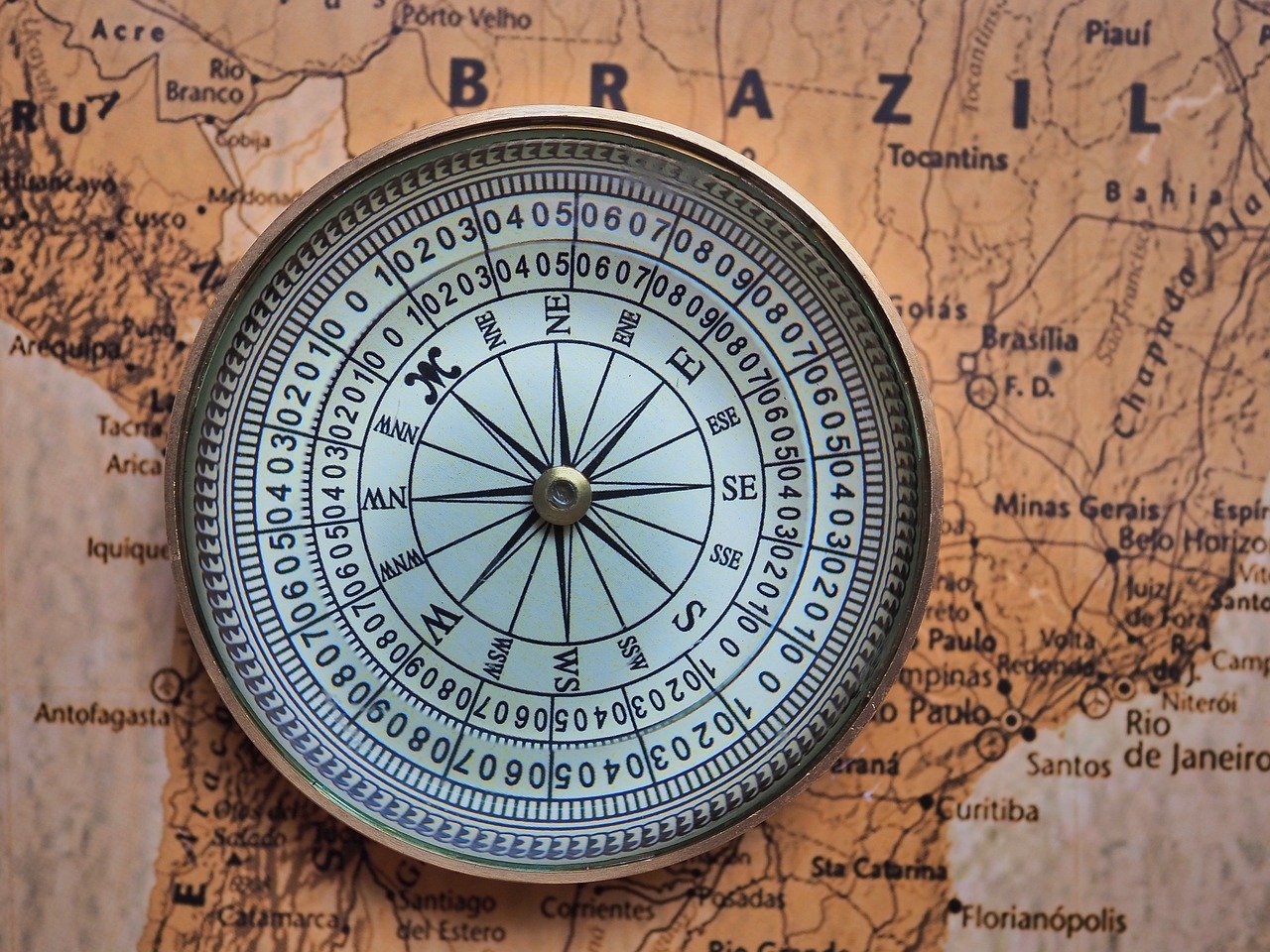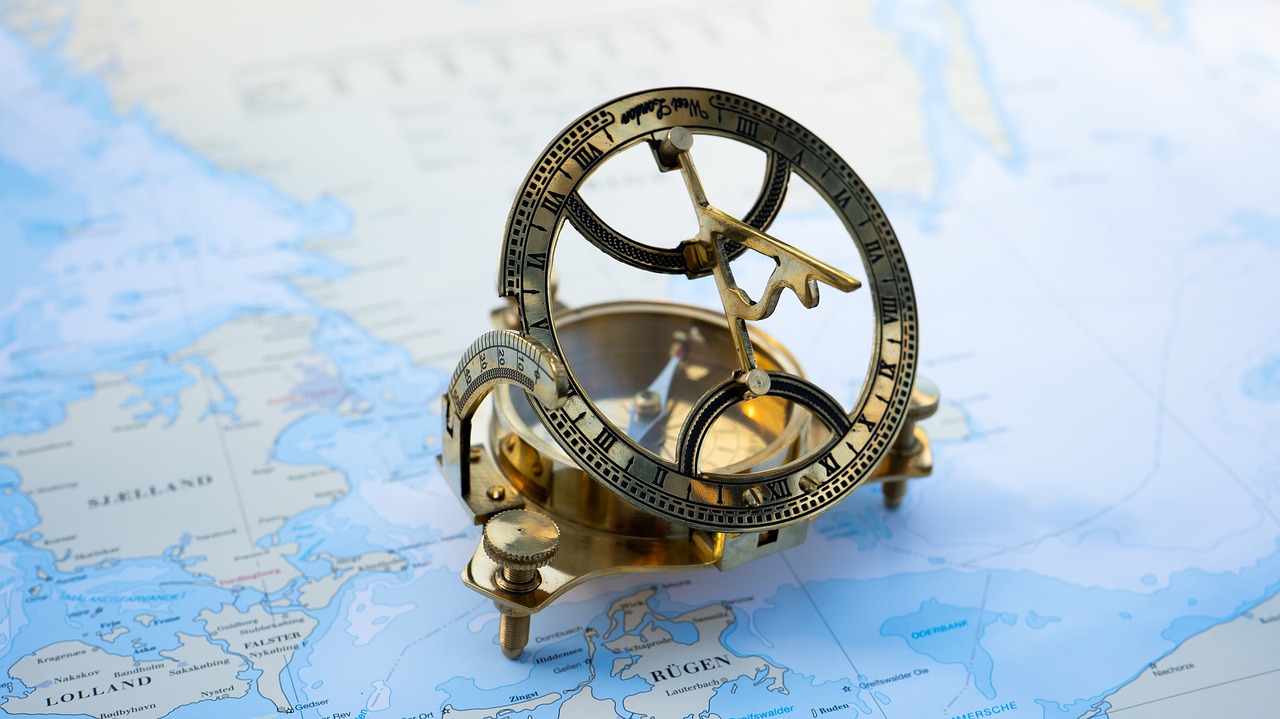How to Use Cognitive Mapping in Qualitative Research
Cognitive mapping is an innovative tool that researchers can leverage to gain a deeper understanding of complex qualitative data. By visually representing knowledge structures, cognitive maps allow researchers to explore the intricate relationships and themes that often emerge during qualitative research. Imagine walking through a dense forest; without a map, you might get lost amidst the trees. Similarly, cognitive mapping serves as a guiding tool, helping researchers navigate through the vast landscape of participant perspectives and experiences.
In qualitative research, where data can often be subjective and nuanced, cognitive mapping provides a framework for organizing thoughts, ideas, and insights. This visual representation not only aids in data interpretation but also enhances communication with participants, making the research process more interactive and engaging. By transforming abstract concepts into tangible visuals, cognitive mapping allows researchers to uncover hidden patterns that might otherwise go unnoticed.
As we delve deeper into the significance of cognitive mapping, it's essential to understand its origins and purpose. Rooted in cognitive psychology, the technique has evolved to become a crucial element in qualitative research methodologies. It encourages researchers to think critically about the connections between different pieces of information, fostering a holistic view of the data collected.
Moreover, cognitive mapping is not just a one-time exercise; it can be revisited and revised as new data emerges, making it a dynamic tool in the researcher's toolkit. This adaptability is particularly beneficial in qualitative research, where new insights can lead to shifts in understanding and interpretation. In the following sections, we will explore the benefits of cognitive mapping in research, the steps to create an effective cognitive map, and its applications across various fields.
Cognitive mapping, at its core, is about visualizing thought processes. It allows researchers to create diagrams that represent the relationships between concepts, ideas, or data points. This technique originated in the field of cognitive psychology, where it was used to understand how individuals perceive and organize information in their minds. By mapping out these cognitive structures, researchers can gain insights into how participants think and make sense of their experiences.
The purpose of cognitive mapping in qualitative research extends beyond mere visualization. It serves as a bridge between qualitative data and analysis, facilitating a deeper understanding of participant perspectives. When researchers can visually depict the connections between different themes or ideas, it becomes easier to identify patterns, contradictions, and gaps in the data. This clarity can lead to more robust findings and recommendations.
Utilizing cognitive mapping in qualitative research offers a myriad of benefits that can significantly enhance the research process. Here are some key advantages:
- Streamlined Data Interpretation: Cognitive maps simplify complex qualitative data, making it easier for researchers to interpret and analyze findings.
- Uncovering Hidden Patterns: By visualizing relationships, cognitive mapping can reveal connections that may not be immediately apparent through traditional analysis methods.
- Enhanced Communication: Visual tools foster better discussions with participants, allowing for a richer exchange of ideas and perspectives.
In the subsequent sections, we will explore how cognitive mapping enhances data visualization, improves participant engagement, and facilitates collaborative analysis among research teams.
One of the standout features of cognitive mapping is its ability to transform qualitative data into visual formats. This transformation is akin to turning a black-and-white photo into a vibrant color image. When researchers create cognitive maps, they bring their data to life, making it easier to identify relationships and themes. Visual aids can significantly enhance qualitative analysis, allowing for a clearer understanding of how different elements interact within the research context.
Using cognitive maps during interviews and focus groups can foster deeper discussions with participants. Imagine sitting down with someone and instead of just talking, you have a visual representation of the topics at hand. This approach encourages participants to engage more actively, share their thoughts more freely, and explore ideas that they might not have considered otherwise. Cognitive maps can serve as conversation starters, guiding discussions in meaningful directions.
Cognitive mapping also promotes teamwork among researchers. Collaborative mapping sessions can lead to richer interpretations and shared insights, as team members build upon each other's ideas. By working together to create a cognitive map, researchers can draw on diverse perspectives, leading to a more comprehensive understanding of the data. This collaborative approach not only enhances the quality of the analysis but also fosters a sense of camaraderie among research team members.
The versatility of cognitive mapping allows it to be applied across diverse disciplines. Whether in education, healthcare, or social sciences, researchers can benefit from this technique. For instance, in healthcare, cognitive mapping can help visualize patient experiences, leading to improved care strategies. In education, it can be used to map out student learning processes, identifying areas for enhancement. The adaptability of cognitive mapping makes it a valuable tool for qualitative researchers in any field.
Creating an effective cognitive map involves several key steps. First, researchers need to gather qualitative data through interviews, surveys, or focus groups. This initial phase is crucial, as the quality of the data collected will directly impact the effectiveness of the cognitive map.
The first step in cognitive mapping is data collection. Techniques for gathering qualitative data include conducting in-depth interviews, utilizing focus groups, and administering open-ended surveys. Each method provides unique insights, contributing to a rich pool of information that will inform the cognitive mapping process.
After data collection, researchers must organize and visualize the information. This involves identifying key themes and concepts and determining how they relate to one another. Strategies for developing a clear and informative cognitive map include using software tools, drawing diagrams by hand, or employing online mapping platforms. The goal is to create a visual representation that accurately reflects the relationships within the data.
What is cognitive mapping?
Cognitive mapping is a visual representation of knowledge structures that helps researchers understand and analyze qualitative data by depicting the relationships between different concepts.
How does cognitive mapping enhance qualitative research?
It enhances qualitative research by streamlining data interpretation, uncovering hidden patterns, improving participant engagement, and facilitating collaborative analysis among researchers.
What fields can benefit from cognitive mapping?
Cognitive mapping is versatile and can be applied in various fields, including education, healthcare, social sciences, and more, helping researchers visualize and analyze complex qualitative data.

Understanding Cognitive Mapping
Cognitive mapping is a fascinating concept that serves as a bridge between our thoughts and how we can represent them visually. Imagine your mind as a complex web of interconnected ideas, memories, and experiences. Cognitive mapping allows researchers to take that intricate web and create a visual representation that makes it easier to understand and analyze. The origins of cognitive mapping can be traced back to the fields of psychology and education, where it was used to help individuals visualize their understanding of concepts. Over time, it has evolved into a powerful tool in qualitative research.
The primary purpose of cognitive mapping is to aid in the visualization of knowledge structures. This technique helps researchers and participants alike to see the relationships between various elements of qualitative data. For instance, when conducting interviews, a researcher might ask a participant to describe their experiences related to a particular topic. By using cognitive mapping, the researcher can visually organize the participant's thoughts, making it easier to identify themes and patterns that may not be immediately apparent.
One of the most significant advantages of cognitive mapping is its ability to simplify complex information. Just like a roadmap helps travelers navigate unfamiliar territory, cognitive maps guide researchers through the often chaotic landscape of qualitative data. They can highlight connections, reveal gaps in understanding, and ultimately lead to deeper insights into participant perspectives. In a world where information overload is the norm, cognitive mapping serves as a beacon, illuminating the path toward clarity and comprehension.
Furthermore, cognitive mapping is not a one-size-fits-all approach. It can be adapted to various research contexts and methodologies. Whether you're exploring social dynamics in a community, understanding consumer behavior, or investigating educational practices, cognitive mapping offers a versatile framework for qualitative analysis. By visualizing relationships and structures, researchers can uncover new dimensions of understanding that might otherwise remain hidden.
In summary, cognitive mapping is a powerful tool that transforms the way researchers engage with qualitative data. It enhances the visualization of complex relationships, fosters deeper participant engagement, and encourages collaborative analysis among research teams. As we delve deeper into the benefits and applications of cognitive mapping in qualitative research, it becomes clear that this technique is not just a method—it's a mindset that embraces the intricacies of human thought and experience.

Benefits of Cognitive Mapping in Research
Cognitive mapping is like a treasure map for researchers, guiding them through the often murky waters of qualitative data. By incorporating this technique, researchers can reap a multitude of benefits that not only streamline their data interpretation but also uncover hidden patterns that might otherwise go unnoticed. Imagine trying to find your way through a dense forest without a map; cognitive mapping provides that clarity, helping researchers navigate complex information with ease.
One of the primary advantages of cognitive mapping is its ability to enhance data visualization. Visual aids are crucial in qualitative research because they transform abstract concepts into concrete representations. When researchers visualize data, they can quickly identify relationships and themes that might be buried in text-heavy reports. For example, a cognitive map can illustrate how different factors influence participant experiences, making it easier to see the big picture at a glance. This visual representation not only aids in comprehension but also makes it simpler to communicate findings to stakeholders who may not be familiar with the intricacies of qualitative analysis.
Moreover, cognitive mapping significantly improves participant engagement during interviews and focus groups. When researchers present participants with visual tools, it fosters deeper discussions and encourages participants to share their thoughts and feelings more openly. It's akin to having a conversation over a shared meal rather than a formal interview; the relaxed atmosphere promotes richer dialogue. Participants can point to areas on the map that resonate with them, leading to insights that might not emerge through traditional questioning methods.
Another noteworthy benefit is that cognitive mapping facilitates collaborative analysis among research teams. In an environment where team members can come together to create and refine cognitive maps, the process becomes a collective endeavor. This collaboration can lead to richer interpretations and shared insights, as team members bring their unique perspectives to the table. By working together to develop the map, researchers can ensure that multiple viewpoints are considered, which enhances the overall quality of the analysis.
In summary, the benefits of cognitive mapping in research are manifold. From enhancing data visualization and improving participant engagement to facilitating collaborative analysis, this technique is a powerful tool for researchers aiming to gain deeper insights into participant perspectives. As qualitative research continues to evolve, embracing cognitive mapping can provide a competitive edge, ensuring that researchers not only collect data but also understand it in a meaningful way.
- What is cognitive mapping? Cognitive mapping is a visual representation of knowledge structures that helps researchers understand complex relationships within qualitative data.
- How does cognitive mapping enhance data visualization? By transforming qualitative data into visual formats, cognitive mapping makes it easier to identify relationships and themes.
- Can cognitive mapping improve participant engagement? Yes, using cognitive maps fosters deeper discussions with participants, enhancing communication during interviews and focus groups.
- Is cognitive mapping useful for collaborative analysis? Absolutely! Cognitive mapping encourages teamwork among researchers, leading to richer interpretations and shared insights.

Enhancing Data Visualization
When it comes to qualitative research, the ability to visualize data is like having a superpower. Imagine trying to navigate a dense forest without a map; you might stumble upon interesting sights, but you could easily miss the bigger picture. Cognitive mapping acts as that essential map, transforming complex qualitative data into clear, visual representations that are easy to understand. This process is not just about aesthetics; it’s about clarity and insight. By visually mapping out relationships and themes, researchers can quickly identify patterns that might otherwise remain hidden in a sea of text.
One of the most compelling aspects of cognitive mapping is its ability to simplify intricate ideas. For instance, when researchers collect extensive qualitative data from interviews or focus groups, they often find themselves overwhelmed by the volume of information. A cognitive map allows them to distill this data into key themes and relationships, providing a visual summary that can be easily shared and discussed. By breaking down complex concepts into digestible visual elements, cognitive mapping enhances comprehension and retention, making it easier for both researchers and participants to engage with the findings.
Moreover, cognitive maps are not static; they evolve as new data is collected. This dynamic nature means that researchers can continuously refine their maps, adding new insights and connections as they emerge. For example, during a research project on community health, a cognitive map might start with basic themes like “access to care” and “health education.” As interviews progress, new branches might emerge, such as “transportation barriers” or “cultural beliefs,” allowing researchers to visualize how these factors interconnect. This iterative process not only aids in data visualization but also fosters a deeper understanding of the subject matter.
The visual format of cognitive mapping can also facilitate discussions among research teams. Think of it as a conversation starter—when everyone can see the same visual representation, it becomes easier to share perspectives and insights. Teams can gather around a cognitive map, pointing out connections, debating interpretations, and collaboratively refining their understanding of the data. This shared visual language enhances collaboration and can lead to richer, more nuanced interpretations of qualitative findings.
In summary, enhancing data visualization through cognitive mapping is a game-changer for qualitative research. It transforms complex information into accessible visuals, promotes collaborative analysis, and ultimately leads to deeper insights. By embracing cognitive mapping, researchers can navigate the intricate landscapes of qualitative data with confidence and clarity, ensuring that no valuable insight goes unnoticed.
- What is cognitive mapping? Cognitive mapping is a visual representation of knowledge structures that helps researchers understand complex relationships within qualitative data.
- How does cognitive mapping benefit qualitative research? It enhances data visualization, improves participant engagement, and facilitates collaborative analysis among research teams.
- Can cognitive mapping be used across different fields? Yes, cognitive mapping is versatile and applicable in various disciplines, including education, healthcare, and social sciences.
- What are the steps to create a cognitive map? The process involves gathering data, organizing the information, and visualizing it in a clear and informative manner.

Improving Participant Engagement
Engaging participants in qualitative research can often feel like trying to catch smoke with your bare hands; it’s elusive and challenging. However, cognitive mapping provides a tangible solution to this problem. By incorporating visual tools, researchers can create a more interactive and stimulating environment during interviews and focus groups. Imagine walking into a room filled with colorful diagrams and maps that visually represent the ideas and thoughts participants have shared. Suddenly, the conversation shifts from a mundane Q&A to a dynamic discussion where participants can see their thoughts represented visually.
One of the most significant advantages of using cognitive maps is that they foster deeper discussions. When participants can visualize their ideas and see how they connect with others, it encourages them to think critically and share more openly. This visual representation acts as a catalyst for conversation, prompting participants to elaborate on their thoughts and feelings. For instance, if a participant sees their viewpoint on a map, they might feel more inclined to discuss it further, leading to richer insights and a more profound understanding of the topic at hand.
Moreover, cognitive mapping can help bridge gaps between participants and researchers. When participants can see how their contributions fit into a larger framework, it creates a sense of ownership and investment in the research process. They are no longer just subjects; they become co-creators of knowledge. This collaborative atmosphere not only enhances the quality of the data collected but also makes the participants feel valued and respected.
To illustrate, consider a focus group discussing community health issues. By using a cognitive map, researchers can visually organize the various health concerns raised by participants. As each concern is added to the map, participants can see the connections between their issues and those of others, leading to a more comprehensive discussion. This method not only improves engagement but also ensures that all voices are heard, making the research process more inclusive.
In conclusion, cognitive mapping serves as a powerful tool for improving participant engagement in qualitative research. By transforming abstract thoughts into visual representations, researchers can create an interactive and collaborative environment that encourages deeper discussions and fosters a sense of ownership among participants. So, the next time you’re gearing up for a qualitative study, consider how cognitive mapping can revolutionize your engagement strategy and lead to richer, more meaningful insights.
- What is cognitive mapping? - Cognitive mapping is a visual representation of knowledge structures that helps researchers understand complex relationships within qualitative data.
- How does cognitive mapping improve participant engagement? - It fosters deeper discussions by allowing participants to visualize their thoughts and see how they connect with others, creating a more interactive environment.
- Can cognitive mapping be used in any field? - Yes, cognitive mapping is versatile and applicable across various disciplines, including education, healthcare, and social sciences.
- What are the steps to create a cognitive map? - The process involves gathering data, organizing it, and then visualizing the information in a clear and informative manner.

Facilitating Collaborative Analysis
In the realm of qualitative research, collaboration is not just a buzzword; it's a vital component that can significantly enhance the depth and breadth of analysis. When researchers come together to create and refine cognitive maps, they open the door to a wealth of insights that might go unnoticed in solitary efforts. Imagine a group of explorers, each with their own unique map of a vast, uncharted territory. By sharing their maps, they can combine knowledge, fill in gaps, and ultimately create a more comprehensive understanding of the landscape. This is the essence of collaborative analysis through cognitive mapping.
One of the standout features of cognitive mapping is its ability to allow multiple researchers to visualize and interpret data collectively. During collaborative mapping sessions, participants can engage in dynamic discussions, challenge assumptions, and build upon each other's ideas. This process not only fosters a sense of teamwork but also encourages critical thinking and creativity. As researchers share their perspectives, they can identify connections and patterns that may have been overlooked, leading to richer interpretations of the data.
Moreover, cognitive mapping serves as a powerful tool for aligning the team's understanding of the research focus. By collectively developing a cognitive map, researchers can ensure that everyone is on the same page regarding key themes and concepts. This alignment is crucial for maintaining consistency in data interpretation and analysis. It can also help to mitigate biases, as different viewpoints are considered and integrated into the final product.
To illustrate the process of collaborative analysis, consider a scenario where a research team is studying community perceptions of public health initiatives. Each team member may bring unique insights based on their interactions with participants. By gathering around a large cognitive map, they can:
- Identify common themes that emerge from individual interviews.
- Highlight divergent opinions that warrant further investigation.
- Explore the relationships between different factors influencing community health perceptions.
This collaborative effort not only enriches the analysis but also empowers the researchers to present a well-rounded narrative that reflects the complexities of participant perspectives. Ultimately, facilitating collaborative analysis through cognitive mapping transforms the research process into a shared journey, where knowledge is co-created and insights are amplified.
Q1: What is cognitive mapping?
A1: Cognitive mapping is a visual representation of knowledge structures that helps researchers organize and analyze qualitative data by illustrating relationships and themes.
Q2: How does cognitive mapping enhance collaborative analysis?
A2: It allows researchers to visualize data together, fostering discussions that lead to richer interpretations and a shared understanding of the research focus.
Q3: Can cognitive mapping be used in various fields?
A3: Yes, cognitive mapping is versatile and can be applied across diverse disciplines, including education, healthcare, and social sciences, to enhance qualitative research.

Applications in Various Fields
Cognitive mapping is not just a fancy term thrown around in academic circles; it’s a powerful tool that transcends boundaries and finds applications in a multitude of fields. From education to healthcare, cognitive mapping serves as a bridge, connecting complex ideas and facilitating better understanding among stakeholders. Imagine a world where intricate data is simplified into a visual format that everyone can grasp—this is the essence of cognitive mapping.
In the realm of education, cognitive mapping has been employed to enhance learning experiences. Teachers and students can collaboratively create cognitive maps that outline key concepts and their relationships. This not only aids in knowledge retention but also encourages critical thinking. For instance, in a history class, students might map out the causes and effects of a significant event, visually representing how various factors interconnect. This method not only makes learning more interactive but also helps students see the bigger picture.
When it comes to healthcare, cognitive mapping can be a game changer. Healthcare professionals utilize cognitive maps to understand patient journeys, identify barriers to care, and improve service delivery. By mapping out the patient experience—from initial symptoms to treatment options—healthcare providers can pinpoint areas needing improvement. For example, a cognitive map might reveal that patients struggle with understanding medication instructions, prompting the development of clearer communication strategies. This visual representation fosters empathy and understanding, ultimately leading to better patient outcomes.
Business is another arena where cognitive mapping shines. Organizations often face complex challenges that require innovative solutions. By employing cognitive mapping during brainstorming sessions, teams can visualize problems and explore potential solutions collaboratively. This method not only streamlines the decision-making process but also encourages diverse perspectives. Whether it's launching a new product or improving customer service, cognitive maps can help teams navigate the intricacies of their projects.
Furthermore, in the field of social sciences, researchers leverage cognitive mapping to explore societal issues. By mapping out community perceptions and experiences, researchers can gain deeper insights into social dynamics and relationships. For instance, a study on urban development might use cognitive maps to visualize how residents perceive changes in their neighborhood, highlighting concerns and aspirations. This approach not only enriches qualitative data but also empowers communities by giving them a voice in the research process.
In summary, cognitive mapping is a versatile tool that enhances understanding and communication across various fields. Its ability to transform complex information into visual formats makes it invaluable for educators, healthcare providers, businesses, and social scientists alike. As we continue to navigate an increasingly complex world, the importance of cognitive mapping in qualitative research cannot be overstated. It’s not just about making sense of data; it’s about forging connections and fostering collaboration among diverse stakeholders.

Steps to Create a Cognitive Map
Creating an effective cognitive map is not just about drawing pretty pictures; it's a systematic process that requires careful thought and planning. The journey begins with gathering data, where researchers immerse themselves in qualitative data collection methods. This could involve interviews, focus groups, or even observational studies. The goal here is to collect rich, detailed information that reflects the perspectives and experiences of participants. Think of this step as filling a treasure chest with precious gems of knowledge—each piece of data is valuable and will contribute to the overall map.
Once the data is collected, the next step is to develop the map. This is where the magic happens! Researchers sift through the collected data, identifying key themes, concepts, and relationships. It’s like piecing together a jigsaw puzzle, where each piece represents a unique insight. To create a clear and informative cognitive map, consider organizing the data into categories or clusters. This not only helps in visualizing the information but also highlights the connections between different ideas. For instance, if you’re mapping out the factors affecting student engagement, you might categorize these factors into environmental, social, and personal influences.
During this development phase, it’s also essential to utilize visual aids effectively. Tools like mind mapping software or simple drawing tools can help bring your cognitive map to life. Imagine using colors to differentiate between themes or shapes to represent various concepts—this makes the map not only more engaging but also easier to understand. Incorporating symbols or icons can further enhance the clarity of your cognitive map, making it a visual feast that invites viewers to explore the relationships within the data.
After the initial draft of the cognitive map is complete, it’s crucial to review and refine it. This is akin to polishing a diamond; the more you refine it, the more brilliant it becomes. Gather feedback from peers or colleagues to gain different perspectives. They might spot connections you missed or suggest alternative representations that could enhance the overall clarity of the map. Remember, the aim is to create a cognitive map that not only conveys information but also sparks curiosity and discussion among viewers.
Finally, once the cognitive map has been refined, it’s ready for analysis. Researchers can now use this visual tool to engage in deeper discussions, uncover hidden patterns, and draw insightful conclusions from the qualitative data. The beauty of cognitive mapping lies in its ability to transform complex relationships into a visual format that is not only easy to digest but also facilitates a richer understanding of the data.
- What is the primary purpose of a cognitive map? The primary purpose of a cognitive map is to visually represent knowledge structures, helping researchers understand and analyze complex relationships within qualitative data.
- Can cognitive mapping be used in quantitative research? While cognitive mapping is primarily a qualitative tool, aspects of it can be adapted for quantitative research, particularly in visualizing survey data or statistical relationships.
- What tools can I use to create cognitive maps? There are various tools available, such as mind mapping software (e.g., MindMeister, XMind) or even simple drawing tools, to create cognitive maps effectively.
- How do I ensure my cognitive map is effective? To ensure effectiveness, focus on clarity, organization, and engagement. Use visual aids, gather feedback, and refine the map to enhance understanding.

Gathering Data
Gathering data is the cornerstone of creating an effective cognitive map. It's not just about collecting information; it's about understanding the nuances of participant perspectives and experiences. Imagine you’re a detective piecing together a mystery. Each piece of data you collect is a clue that can lead you to a deeper understanding of the topic at hand. So, how do you go about this crucial step?
First and foremost, you need to choose the right methods for data collection. Depending on your research objectives, you might opt for qualitative interviews, focus groups, or even observational studies. Each method has its unique strengths. For instance, interviews allow for in-depth exploration of individual perspectives, while focus groups can spark dynamic discussions that reveal collective insights. Here’s a quick breakdown of some effective data collection techniques:
| Data Collection Method | Description | Advantages |
|---|---|---|
| Interviews | One-on-one discussions to explore individual thoughts. | Deep insights, personalized data. |
| Focus Groups | Group discussions to gather diverse opinions. | Rich dialogue, interactive insights. |
| Observational Studies | Watching participants in their natural environment. | Real-world context, behavioral insights. |
As you gather data, it’s essential to create a comfortable environment for participants. Think of it like inviting friends over for a casual chat. The more relaxed they feel, the more likely they are to open up and share their true thoughts. This rapport can be built by explaining the purpose of the research, ensuring confidentiality, and actively listening to their responses.
Additionally, consider using tools like surveys or questionnaires to supplement your qualitative data. While these tools often yield quantitative data, they can also include open-ended questions that invite participants to express their thoughts in their own words. This blend of qualitative and quantitative data can enrich your cognitive mapping process, providing a more comprehensive view of the subject matter.
In summary, gathering data for cognitive mapping isn’t just about collecting facts; it’s about cultivating a narrative that reflects participant experiences and insights. By choosing the right methods, fostering a comfortable atmosphere, and blending various data types, you can create a solid foundation for your cognitive map. Remember, the quality of your cognitive map is only as strong as the data that informs it!
- What is cognitive mapping? Cognitive mapping is a visual representation of knowledge structures that helps researchers understand complex relationships in qualitative data.
- Why is data gathering important? Data gathering is crucial as it forms the basis for the cognitive map, allowing researchers to visualize and analyze participant perspectives effectively.
- What methods can I use for gathering data? Common methods include interviews, focus groups, and observational studies, each offering unique advantages for qualitative research.
- How can I ensure participants feel comfortable during data collection? Building rapport, explaining the research purpose, and ensuring confidentiality can help create a relaxed environment for participants.

Developing the Map
Creating a cognitive map is like crafting a detailed blueprint of your thoughts and findings. It’s not just about putting dots on a page; it’s about weaving together the intricate threads of qualitative data into a coherent tapestry. The first step in this journey is to gather all relevant information, ensuring you have a rich pool of data to draw from. Think of it as collecting ingredients for a gourmet dish—the more diverse and high-quality your ingredients, the more flavorful your final product will be.
Once you have your data, it’s time to dive into the development phase of your cognitive map. This process involves several critical steps:
- Organizing Information: Start by categorizing your data. Group similar themes, concepts, or ideas together. This helps in visualizing how different elements relate to one another. You might find that certain themes cluster naturally, revealing underlying patterns.
- Identifying Key Concepts: Highlight the most important ideas that emerge from your data. These will serve as the backbone of your cognitive map. Ask yourself: What are the main takeaways? What concepts do participants emphasize the most?
- Creating Visual Connections: Use lines, arrows, or other visual markers to connect related concepts. This step is crucial as it transforms your organized data into a dynamic representation of relationships. It’s like connecting the dots in a puzzle—each piece adds to the overall picture.
As you develop your cognitive map, remember that clarity is key. A well-structured map should be easy to read and interpret, allowing anyone who views it to grasp the complex relationships at a glance. Utilize colors, shapes, and sizes to differentiate between various themes and their significance. For instance, you might use larger circles for dominant themes and smaller ones for supporting ideas. This visual hierarchy can significantly enhance understanding.
After you’ve created a preliminary version of your cognitive map, it’s essential to review and refine it. Gather feedback from peers or colleagues to ensure that your map accurately reflects the data and insights you’ve collected. Sometimes, a fresh pair of eyes can spot connections or themes that you may have overlooked. This collaborative review process not only strengthens the map but also fosters a sense of shared understanding among your research team.
Finally, once you’ve polished your cognitive map, it’s time to present it. Whether you’re sharing it in a research paper, a presentation, or a workshop, make sure to explain the rationale behind your design choices. Discuss how the map encapsulates the qualitative data and what insights can be drawn from it. This is your chance to illuminate the path you’ve taken through the complex landscape of qualitative research, guiding your audience through the maze of thoughts and findings.
Frequently Asked Questions
- What is cognitive mapping?
Cognitive mapping is a visual representation of knowledge structures, helping researchers illustrate and understand complex relationships within qualitative data. It allows for a clearer view of how different concepts are interconnected, making it easier to analyze and interpret findings.
- How does cognitive mapping enhance qualitative research?
By transforming qualitative data into visual formats, cognitive mapping streamlines data interpretation and uncovers hidden patterns. This technique not only aids in identifying relationships and themes but also fosters deeper discussions with participants, enhancing engagement during interviews and focus groups.
- What are the benefits of using cognitive mapping?
The benefits of cognitive mapping include improved data visualization, enhanced participant engagement, and the facilitation of collaborative analysis among research teams. It allows researchers to work together more effectively, leading to richer interpretations and shared insights.
- In which fields can cognitive mapping be applied?
Cognitive mapping is versatile and can be applied across various disciplines, including education, psychology, sociology, and healthcare. Its adaptability makes it a valuable tool for researchers in different domains looking to gain deeper insights through qualitative research.
- What are the steps to create a cognitive map?
The steps to create a cognitive map include gathering qualitative data, organizing the information, and visualizing it in a clear format. This process involves brainstorming ideas and finalizing the map for analysis, ensuring that it accurately reflects the insights derived from the data collected.
- How can I gather data for cognitive mapping?
Data for cognitive mapping can be gathered through various qualitative research techniques, such as interviews, focus groups, and surveys. It's important to collect rich, detailed data that will inform the mapping process and provide a solid foundation for analysis.
- What strategies can help in developing a cognitive map?
To develop an effective cognitive map, researchers should focus on organizing the data logically, using visual aids like colors and symbols to differentiate themes, and ensuring clarity in the representation of relationships. Collaboration with team members during this process can also enhance the quality of the final map.



















